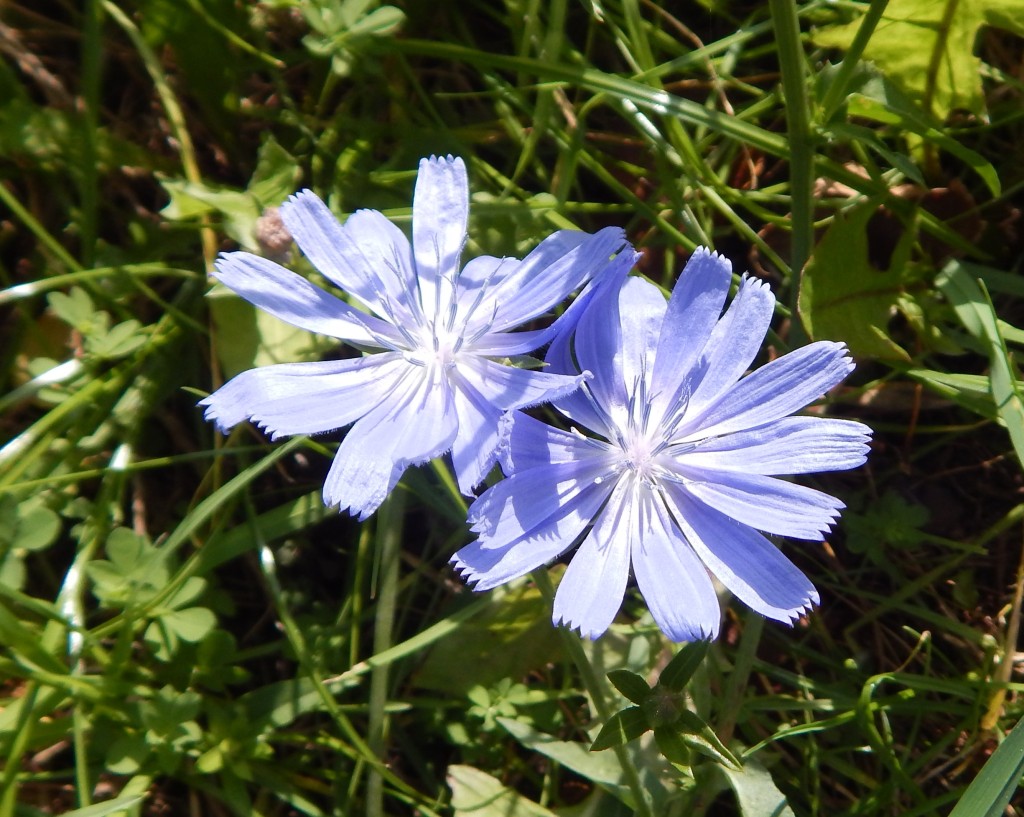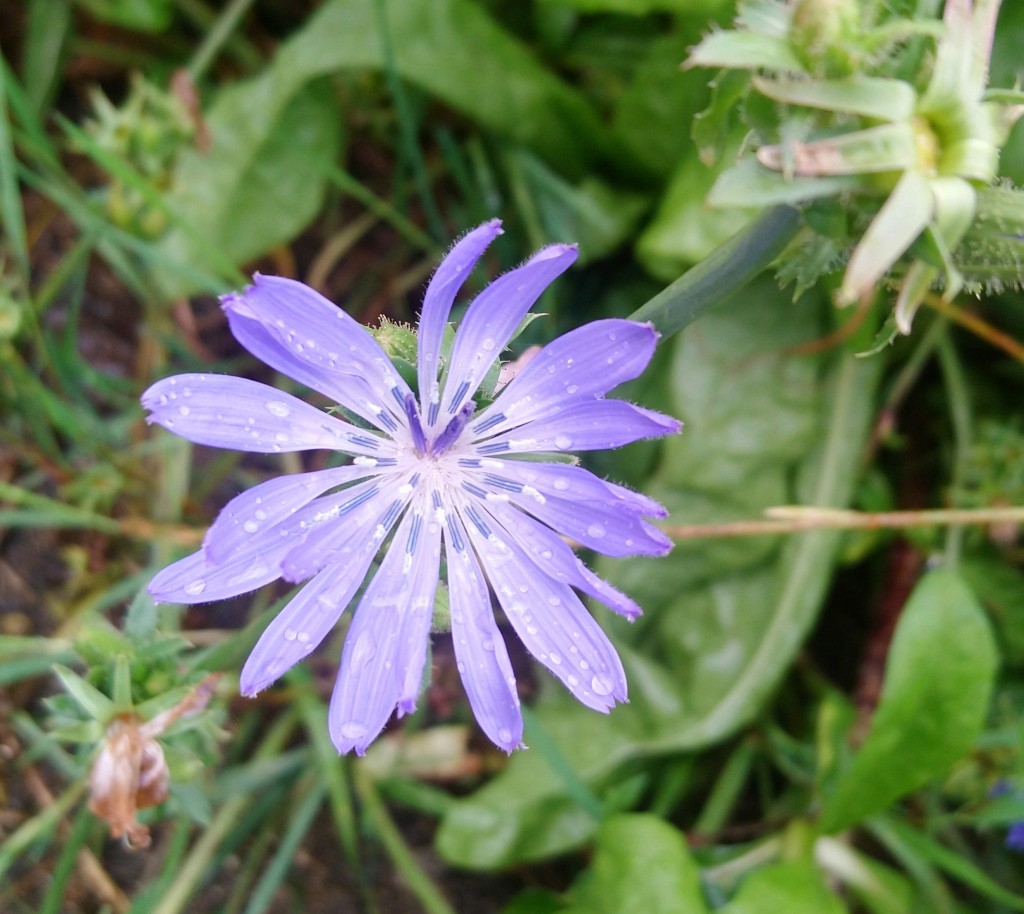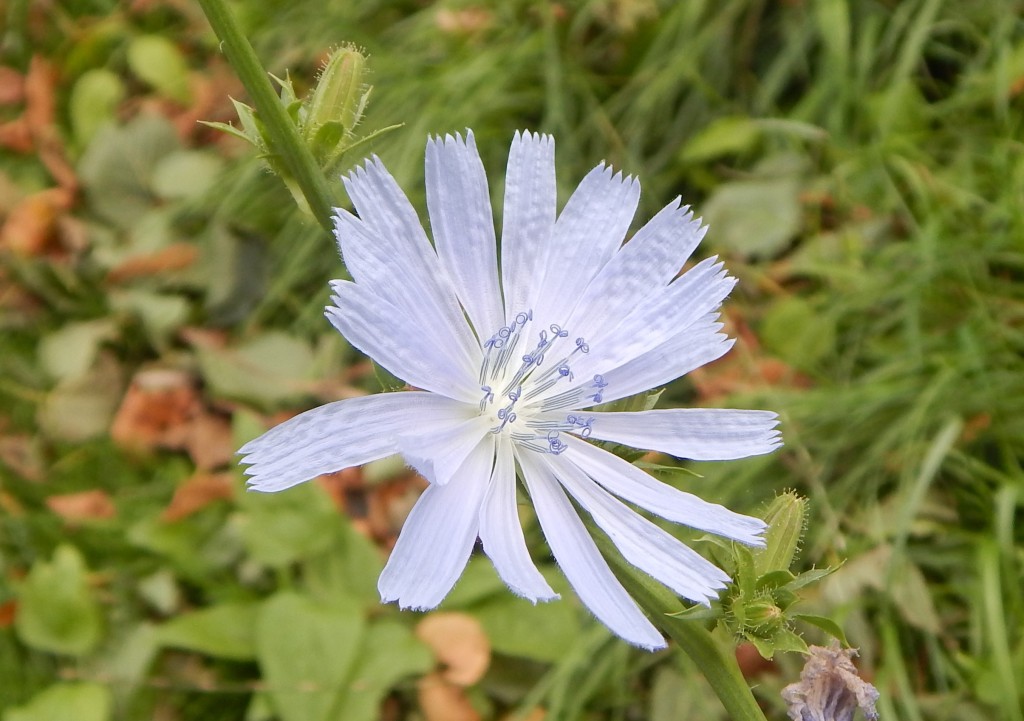
[081] Cichorium intybus, Chicory
Introduction
Cichorium intybus, Chicory, is a very widespread perennial wild flower, which is also cultivated as a salad plant, when it may be known as radicchio or endive.
It can be called Common Chicory and has been known as Blue Daisy, Blue Dandelion, Blue Sailors, Blue Weed, Coffeeweed, Cornflower, Horseweed, Ragged Sailors, Wild Bachelor’s Buttons and Wild Endive. [Some of these names can be compared to Centaurea cyanus. The references to sailors are to their blue uniforms.]
It is sometimes confused with the very similar Cichorium endivia, Curly Endive, which is called Chicory in the USA and is widely cultivated as a salad plant.
Taxonomy
Kingdom – Plants
Division – Vascular Plants
Class – Angiosperms (Flowering Plants)
Order – Asterales
Family – Asteraceae
Subfamily – Cichorioideae
Tribe – Cichorieae
Subtribe – Cichoriinae
Genus – Cichorium
Scientific Name – Cichorium intybus
There are many different cultivated varieties.
Name
Chicory comes from the same roots as the Latin Cichorium and similar Ancient Greek. Intibus or Intybus is another Latin name for the same plant.
Description
Even at tribe level there are a hundred genera in Cichorieae, forming a small part of the Asteraceae family. Almost all of the species only have ray florets.
It is hard to show the Chicory plant in pictures because it can grow to the size of a bush but its stems are long and thin. At a distance the plant is less obvious than its flowers.



The flowers are a paler blue than [075] Cornflower and differ in the lack of disc florets.



In real life they are much bluer than my camera would suggest.
Habitat and use
Chicory is native to Europe but widespread and naturalised in North America, China and Australia. It was cultivated in Ancient Egypt and Ancient Rome and introduced to Europe in the Seventeenth Century as a flavouring for drinks.
It is used as a forage crop for livestock.
Chicory roots can be used as a substitute for coffee, often being produced as a mixture of coffee and chicory. Its use has been prompted by shortages of coffee such as the ban by Frederick the Great in 1766 on coffee imports to Prussia, and shortages in the UK in the Second World War.
The roots can also be used in brewing and can be eaten like parsnips.
The leaves are eaten as salad vegetables and there are several varieties. Radicchio has variegated red or red and green leaves and may taste bitter. Belgian endive, just known as chicory in the UK, has blanched leaves grown without sunlight. Sometimes leaf chicory is called endive.
Other Notes
I have to admit that this is one of the most attractive wildflowers I have discovered in the past year. I see it on roadside verges less than a hundred metres from where I live.
See also
Chicory is, of course, similar in some ways to [075] Cornflower.

Pingback: [352] Ulva intestinalis, Gutweed and Green Algae | The Species of Britain